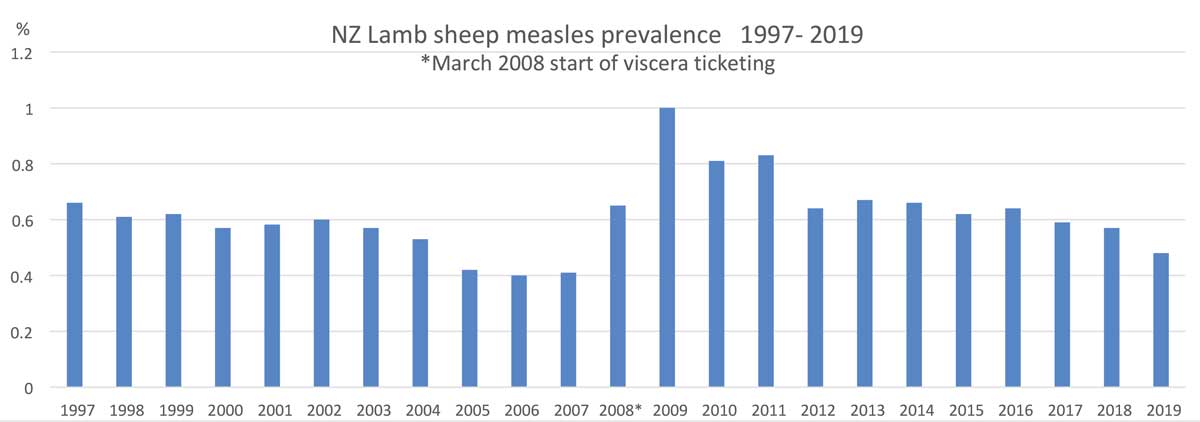Getting sheep shape at Pyramid Farm
The vineyards at Pyramid Farm in Marlborough’s Avon Valley have never been run of the mill, with plantings that follow the natural contours of the land, 250 metres above sea level.
A big drop in sheep measles prevalence has occurred during the past 12 months.
“The national prevalence of sheep measles has dropped from 0.57% last season to 0.48%,” says Dan Lynch, project manager of Ovis Management.
“At first glance, it doesn’t look huge, but in real terms it is. It’s a great result.”
He says several factors, such as higher ewe values, mean there’s less home-kill being fed to dogs on-farm, reducing the risk of C. ovis outbreaks. But much of the latest drop in prevalence results from a steady increase in the number of farmers dosing their dogs monthly.
“While the reduction has been occurring over several seasons this is the most significant to date.”

However, Lynch says that’s no cause for complacency as sheep measles remains a quality issue in the marketplace.
Ovis Management has in the last 12 months worked to get its message to a bigger audience by more use of social media, new branding and an updated website.
“The goal, to share the importance of preventing sheep measles, is not just for farmers but other dog owners who may unwittingly allow their dogs to carry and spread the parasite,” Lynch said.
“ ‘Promote, protect and participate’ are the three pillars of the new-look branding. The message is that every at-risk dog, big or small, should be dosed monthly.”
New Zealand now has relatively low levels of sheep measles. An outbreak could cause a lot of damage in otherwise healthy stock.
There are also real financial costs for farmers. At processing, infected animals result in downgrading or, in extreme cases, condemning of sheep or lamb carcases.
More than 150 people turned up at Parliament recently to celebrate the 20th anniversary of Horticulture New Zealand (HortNZ).
Biosecurity New Zealand says Kiwis should continue to keep an eye out for yellow-legged hornets (Vespa velutina) over the holiday season.
The Push-Up Challenge, an event which combines mental health and fitness, is set to launch in New Zealand in 2026.
Last month's Agritechnica event led to a wide group of manufacturers celebrating successes when the 2026 Tractor of the Year Competition winners, selected by a panel of European journalists, were announced in Hanover Germany.
According to the latest Federated Farmers banking survey, farmers are more satisfied with their bank and less under pressure, however, the sector is well short of confidence levels seen last decade.
Farmer confidence has taken a slight dip according to the final Rabobank rural confidence survey for the year.